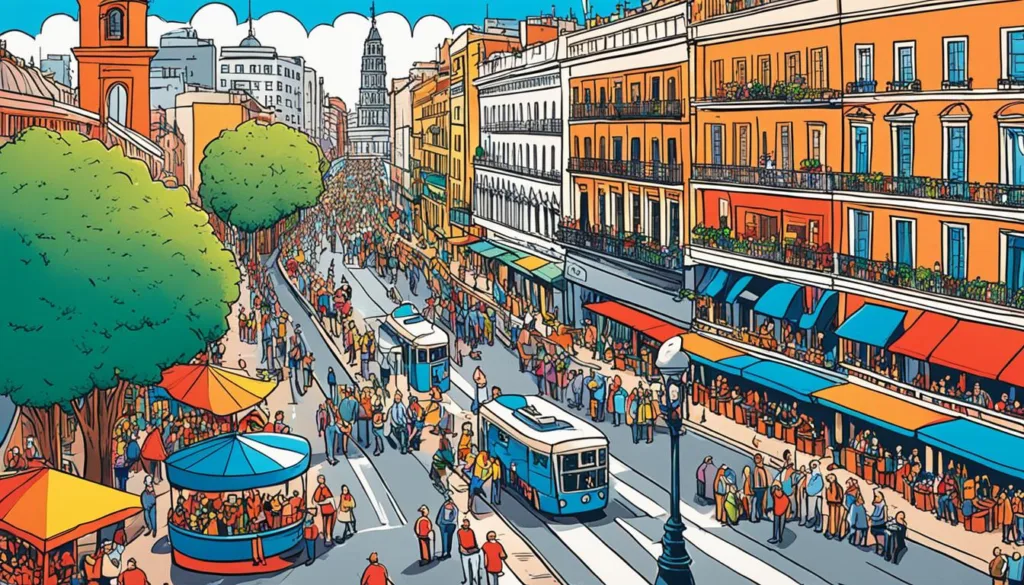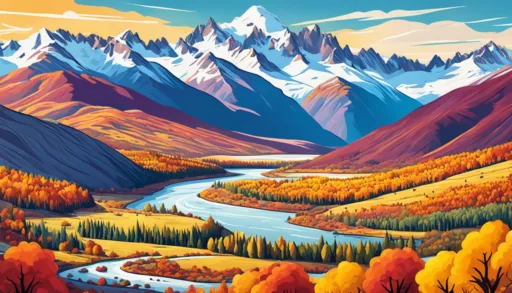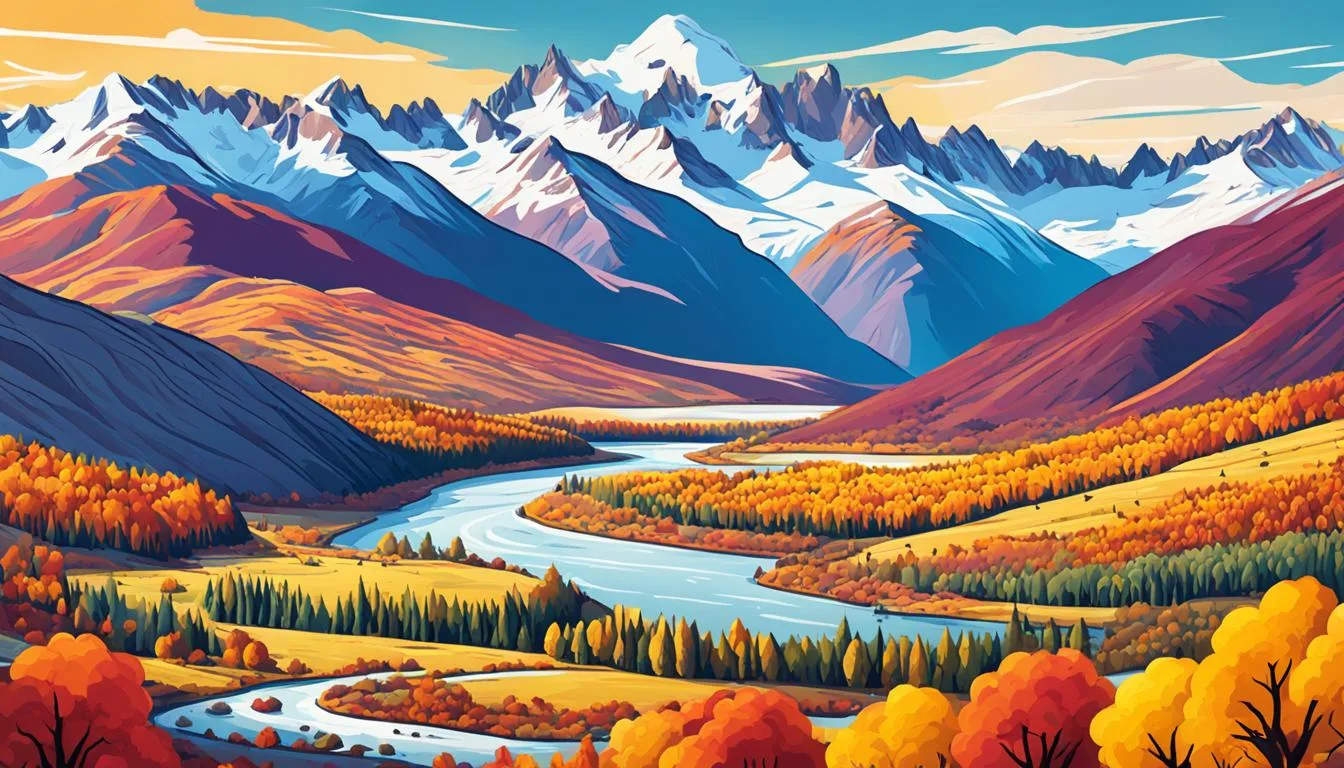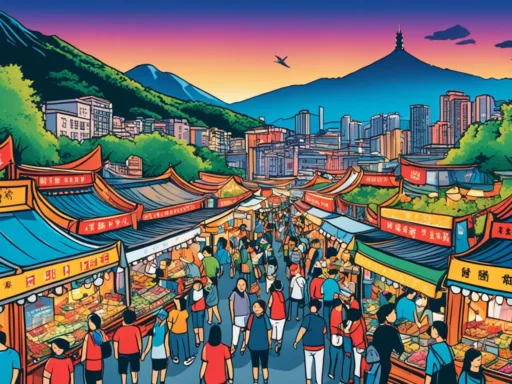Imagine a land that stretches from the ice-capped Andes to the vibrant tango halls of Buenos Aires, a country with a climate as varied as its culture is rich—Argentina. With each region presenting its own seasonal charm, the question of the best time to visit Argentina can be as layered as the country’s diverse landscapes. Is the lush splendor of summer in Patagonia more alluring or the autumnal hues of Mendoza’s wine country? Do the bustling streets of Buenos Aires in spring carry a tune that calls out to you? Uncover the secrets of Argentina vacation planning with insider Argentina travel tips that will reveal the country’s seasonal allure, allowing you to orchestrate the perfect backdrop for your personal Argentine odyssey.
Determining the Argentina tourism season that complements your travel desires is no simple feat, but a little insight can make all the difference. With each turn of the season, an entirely new palette of experiences, sceneries, and activities unfolds. So, grab your planner and let’s embark on a detailed exploration of Argentina’s must-visit seasons, dialing in on the ideal time for your next great journey.
Key Takeaways
- Optimal travel times in Argentina vary significantly by region and desired experiences.
- Summer months (December to February) are prime for Patagonian adventures; autumn (March to May) is ideal for Mendoza’s wine country.
- The shoulder seasons (September to November and March to May) often offer the best combination of moderate climate, pricing, and tourist traffic.
- Argentina’s high seasons peak from late November to February and in July, while the low seasons fall in June and August.
- Understanding the seasonal contrasts within Argentina is crucial for both budget-friendly and peak experience travel planning.
Understanding Argentina’s Climate and Seasonal Highlights
Embarking on Argentina vacation planning involves more than picking a destination; it’s also about timing your visit to align with optimal Weather in Argentina. The sheer geographic diversity means that you’re likely to experience different weather patterns during the same season, depending on whether you’re in the bustling streets of Buenos Aires or the breath-taking expanses of Patagonia. The complexity of the climate adds an intriguing layer to the Ideal time to visit Argentina.
Argentina’s Geographic Diversity and Weather Patterns
Argentina’s vast landscape is a tapestry of climate zones, each with unique weather patterns that can affect your planned activities. In the temperate boulevards of Buenos Aires, spring brings pleasant warmth suitable for exploring the city’s vibrant culture. Venture into the wine-rich region of Mendoza, and you’ll find similar conditions, perfect for leisurely vineyard tours. However, Patagonia presents an entirely different climate scenario, with cooler temperatures that might warrant extra layers even during the same time of year.
The Impact of Seasons on Argentina’s Natural Beauty
The change of seasons in Argentina not only provides a visual spectacle but also influences the country’s natural attractions. Picture the Lake District, where the unfolding of the foliage can transform your experience of the region’s vineyards, creating a vivid backdrop for tasting Argentina’s famed wines. In contrast, Patagonia’s rugged terrain grows more imposing with the arrival of snow, appealing to adventurers eager to explore this frost-kissed wonderland.
Why Timing Matters for Your Visit
Anticipating weather variations is key to ensuring that your Argentina getaway meets your expectations. Whether it’s the exhilaration of outdoor adventures, the thrills of urban discovery, or the enjoyment of winter sports, your experiences will be shaped by the season in which you choose to travel. This indicates the cruciality of timing in Argentina vacation planning, underlining that when you visit can be just as important as where you go.
Best Time to Visit Argentina
Navigating the vibrant seasons of Argentina requires a blend of savvy travel planning and an understanding of the country’s ever-changing climates. For those pondering when to embark on their Argentine adventure, the peak season in Argentina sweeps through the summer months of January and February, offering balmy weather and a festive atmosphere. That said, as the peak season draws bustling crowds and soaring prices, many travelers are turning their sights to off-peak travel Argentina, where the allure of tranquility and savings beckon.

Mid-to-late spring, from October to early December, emerges as a prime choice, striking a harmonious balance between comfortable temperatures and manageable tourist presence. Yet, it’s crucial to recognize that the idyllic time to visit varies widely depending on individual interests and the regions contemplated.
| Season | Benefits | Drawbacks |
|---|---|---|
| Spring (Oct – Dec) | Perfect climate for outdoor activities, fewer tourists, cost-effective travel options | Some chilly evenings in southern regions, occasional rain |
| Summer (Jan – Feb) | Peak tourist activities, festivals, and events | Higher accommodation rates, crowded landmarks |
| Autumn (Mar – May) | Stunning foliage in wine regions, pleasant weather | End of the high season could mean fewer services in tourist spots |
| Winter (Jun – Aug) | Best time for snow sports, lower prices in most areas | Colder temperatures, limited access to some destinations due to snow |
| Early Spring (Sept) | Beginning of flower blooms, reduced rates | Variable weather, some attractions still gearing up after winter |
The discerning traveler may choose to avoid the traffic of peak season by opting for the months of March to June or September, where one can reap the rewards of off-peak travel. Not only do flights and accommodation become more affordable, but the chances of engaging more deeply with the local culture also increase as cities and attractions are less inundated with international visitors.
- Opportunity to engage with local culture and traditions
- More personal attention from tour guides and in accommodation
- Better deals for both flights and lodgings
- Shorter queues at popular tourist sites
Traveling strategically—by aligning your visit with the peak conditions for your desired activities or by meticulously selecting regions that are experiencing their best weather during your travel dates—allows for a far richer and more customized Argentine experience. Whether you’re sipping Malbec amidst Mendoza’s autumnal vineyards or trekking through Patagonia’s springtime bloom, Argentina’s seasons have a unique magic awaiting each visitor.
The Magic of Patagonia: Summer and Early Fall Adventures
Embracing the outdoors during Argentina’s warmest months in Patagonia offers a unique experience replete with breath-taking vistas and adventure. The key to unlocking the full splendor of this region lies in understanding the nuances of the weather in Argentina and timing your visit to match the Argentina tourism season. Here’s your guide to making the most of Patagonia’s natural wonders.
Experience the Wonders of Patagonia in Peak Season
The allure of Patagonia reaches its zenith between December and February, where the mercury hovers around a comfortable 70℉. The inviting weather in Argentina during this period guarantees that all trails are open and the natural beauty is at its peak. This time is perfect for travelers looking to experience Patagonia at its most vibrant.
The active ambiance of the peak season also means that Patagonia becomes a hub of cultural exchanges and spirited exploration. You’ll find that the landscape buzzes with fellow enthusiasts eager to unearth the treasures of the region from the Perito Moreno Glacier to the Fitz Roy trek.
Off-Peak Travel to Patagonia: Tranquility and Value
Those who favor serenity and fewer crowds can turn their gaze towards the off-peak spring months. Visiting Patagonia from October to November opens opportunities for a more intimate and value-driven experience. This is when the terrain is still resplendent, but the paths less traversed, allowing for reflective and tranquil exploration.
Essential Tips for a Patagonian Summer
Navigating a summer stay in Patagonia calls for some strategic planning. Here’s a quick checklist tailored to help you get the most out of the high season:
| Activity | December-February Experience | October-November Advantage |
|---|---|---|
| Hiking Trails | Open and busy with hikers | Less crowded, still accessible |
| Wildlife Spotting | Vibrant – Wildlife is active and visible | More serene wildlife encounters |
| Hotel Rates | At peak prices | More competitively priced |
| Weather | Warm and pleasant | Mild with occasional cool spells |
No matter the season you choose to explore Patagonia, the experience promises to be unforgettable. With the right preparation and awareness of the weather in Argentina, your visit to this breathtaking corner of the world during the Argentina tourism season is sure to be an adventure of a lifetime.
Exploring Buenos Aires in the Shoulder Seasons
For travelers who aim to escape the high tempo of peak travel times, the shoulder seasons offer an appealing alternative for visiting Buenos Aires. Eager explorers will find this period teeming with favorable Argentina travel tips, encouraging visits during times that boast fewer tourists and milder climates. Navigating the shoulder season in Argentina means having the luxury to experience the city’s offerings without the bustle and competition of high-season crowds.
The Vibrant Culture of Buenos Aires without the Crowds
Visitors to Buenos Aires during the shoulder months of September through December and April to June can indulge in the city’s effervescent culture with much more space to breathe. The streets, alive with the murmur of local conversations and the rhythms of tango, invite guests to immerse themselves wholly in the cultural fabric of the city. Moreover, this shoulder period enables travelers to experience genuine Argentinian lifestyle, visiting cafes, theaters, and tango halls that residents frequent, all without the jostling and waiting characteristic of busier times.
Shoulder Season Festivities and Events
Attracting those with a penchant for authentic encounters, Buenos Aires’ calendar is dotted with cultural events and festivities even beyond the tourist-laden summer. With a schedule closely resembling a locals’ to-do list, the city hosts a plethora of events – including seasonal winery tours in regions like Mendoza and various neighborhood festivals that offer an intimate look into the heart and soul of Argentine traditions.
Navigating Weather and Prices in Buenos Aires
Mild weather and manageable prices serve as additional incentives for booking a trip during Buenos Aires’ shoulder seasons. Neither the stifling heat of summer nor the inflated costs commonly associated with peak times will affect visitors. Traveling in these underrated months is not only comfortable but also cost-effective, letting you allocate funds otherwise spent on accommodations and crowded tourist attractions to more enriching personal experiences, such as savoring Argentina’s world-renowned cuisine and indulging in the vibrant nightlife as it blends into cooler evenings.






